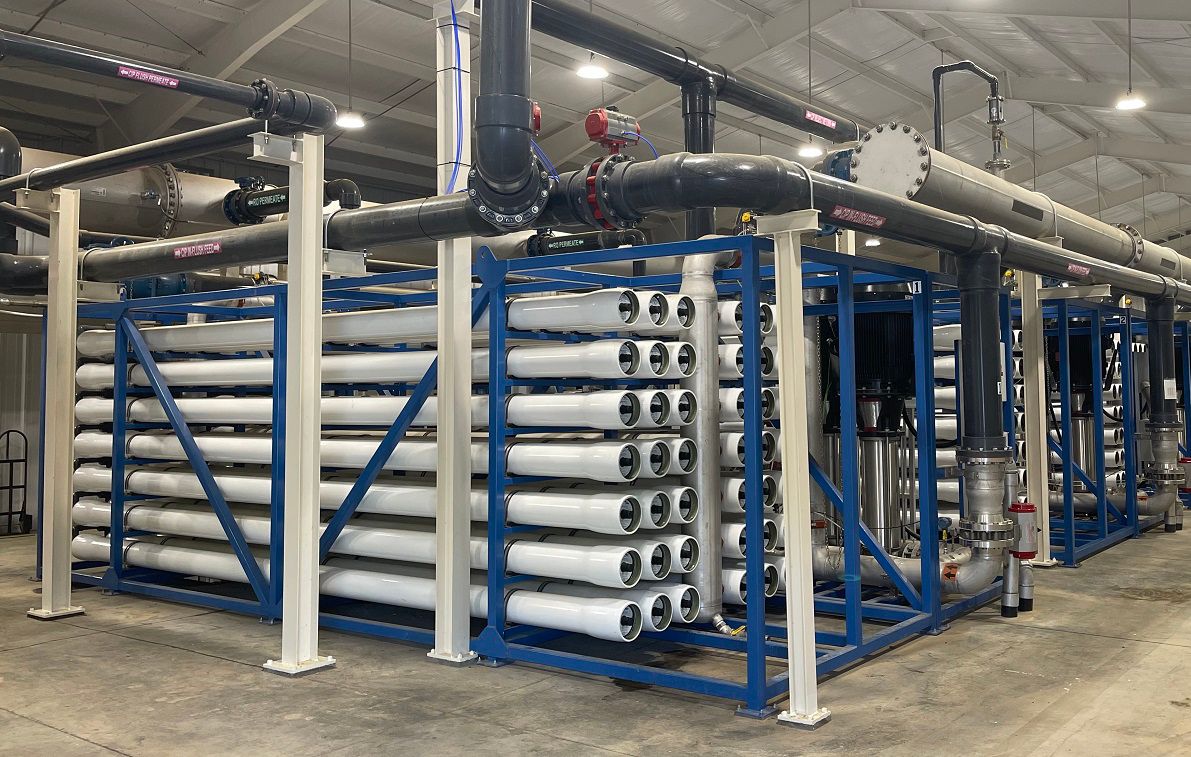Power Plant Wastewater Treatment Systems
Article
Challenge
Southern California Edison (SCE) depends on ultrapure water for emission control and cooling in five of its peaking power plants. In most of these applications, this water comes from municipal sources, and must be made “ultrapure” before use to prevent damage to the turbines in use to generate power. Until recently, SCE had been relying solely on rented, mobile demineralization trailers to purify water for use in these peaking power plants. However, these systems were costly, consumed a lot of water in SCE’s supply chain and presented a singular point of failure in the plant.
Solution
SCE knew that reverse osmosis (RO) made the most sense to replace the temporary, expensive demineralization trailers; but traditional RO systems have limited water recovery rates. This can be overcome, in part, by setting up multi-stage RO systems, but the tradeoff is an increase in operational complexity. SCE then adopted CCRO along with mixed-bed polishers to address all of their concerns of traditional RO and all issues at the five peaking power plants.
Results
- Est. 44 million gallons/year total water savings
- 91% water recovery
- Guaranteed 10 μS/cm quality permeate
- 85% reduction in annual water-related costs
SCE estimates a savings of 44 million gallons of water per year through the CCRO systems — which was first use of CCRO process in the power generation industry. The systems operate at 91% recovery in an elegant and flexible single-stage design, producing a guaranteed water purity of <10 uS/cm. When compared to a traditional multi-stage reverse osmosis system, the CCRO systems provide an additional 18% savings in feedwater consumption and a 64% savings in brine disposal costs. In addition, SCE will greatly improve reliability due to the high quality CCRO permeate and by operating the mixed-bed polishers in series. This novel approach has enabled SCE to reduce its annual water operating costs by 85%, from about $1.5 million to $0.225 million per plant. For adopting new technology in the pursuit of sustainability, this project earned SCE the prestigious 2017 Power Magazine Water Award, which is given to innovative leaders in the power industry.
Quick Facts
- Industry: Power Generation
- Application: Turbine & NOx Emmissions
- Products Used: DesaliTec™ SOAR CCRO Systems (previously ReFlex™ CCRO Systems)
- Year Completed: 2015
- Project Size: 5 projects totaling 250 gallons per minute
